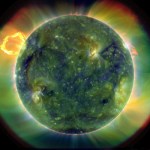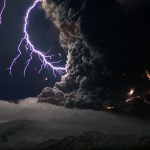APOD
Watch the video below and see if you can see where the warming stops:
(seen at the wonderful APOD site)
Seen on APOD, please enjoy this stunning act of simple observation.
Full Moon Silhouettes
Video Credit & Copyright: Mark Gee; Music: Tenderness (Dan Phillipson)
From APOD's description:
One impressive moonrise was imaged two nights ago over Mount Victoria Lookout in Wellington, New Zealand. With detailed planning, an industrious astrophotographer placed a camera about two kilometers away and pointed it across the lookout to where the Moon would surely soon be making its nightly debut. The above single shot sequence is unedited and shown in real time -- it is not a time lapse. People…
From the "just because it's beautiful" department, have a look at the image sequence below.
Thanks again to APOD!
Water Dance from Alex Cherney on Vimeo.
From APOD:
(click on image for full resolution, totally awesome!)
Here is an equally stuning video of that prominence erupting:
Ironic that according to the IPCC that massive ball of fire has nothing to do with the climate which is entirely controled by CO2, isn't it?
(As humour is hard to detect on the internets I had better spell it out: the IPCC makes no such ridiculous claim, that is a denialist strawman. The sun sends around 343W/m^2 our way, but the important factor is change in that number, which since around 1850 is ~0.3W/m^2 while GHG direct forcing is ~2.5W/m^2. Kinda ruins the…
Don't miss April 19th's APOD, a truly awsome sight!
And while on the subject of Eyjafjallajokull and my recent post about it, readers should be aware of a correction on the source site. The best estimate of CO2 is in fact 150,000 tons per day, not 7400, with a possible maximum of 300,000 tons per day. So the graphic is much less compelling, but the story of Joe vs the Volcano is not affected.
Via last Thursday's APOD, I came to this site where I downloaded an excellent, high-res video about some recent research out of Germany. Over the last 16 years, a team of astronomers have taken images of a tiny patch of sky that is the very center of the milky way. By doing this they have been able to analyze the motion of 28 stars that are orbiting a supermassive blackhole that is the center of our galaxy.
I highly recommend the full video (232MB .m4v) but here is a small taste of the phenomenon from youtube:
One of the star's orbits is only 16 years long, and it gets as close to the…

